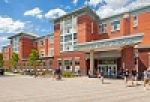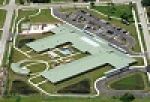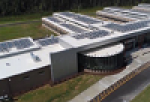K-12 Education
The grades are in: a 2006 national report, Greening America’s Schools, concluded that environmentally friendly school buildings lead to lower operating costs, improved test scores, and enhanced student health. The report, produced by Capital E and co-sponsored by The American Institute of Architects (AIA), concluded that environmentally friendly schools save an average of $100,000 each year. The study examined 30 green schools built between 2001 and 2006, and determined that the total financial benefits of green schools are 20 times greater than their initial cost difference. Measurable benefits include energy and water savings, improved student health and higher test scores.
The findings indicate that there are tremendous benefits from energy efficient school design, not only from an economic standpoint, but also from improved test scores and far healthier environments through improved air quality. Among the study’s conclusions:
- On average, green schools use 33% less energy and 32% less water.
- Green schools typically have better lighting and indoor air quality, which contribute to fewer sick days.
- A study of Chicago and Washington D.C. schools concluded that better facilities could add 3 to 4 percentage points to a school’s standardized test scores.
Where could it be more important to have cleaner air than in our schools? The key to cleaner, healthier air is as simple as A-B-C. Removing the harmful particles and chemicals from the air we breathe provides:
High Efficiency Air Cleaning
Increased Attendance
Lower Energy Costs
Ease of Maintenance
Versatility
Mold Prevention
Dynamic Air Cleaners provide a performance-based specification that allows CosaTron, Bio-climatic, and other commercial air cleaning systems to be used as approved equals.
And some states, such as North Carolina, cover up to 100% of the capital equipment cost for any equipment used in schools and universities that provide energy savings within specified payback periods. The payback period in North Carolina, for example, is seven years.
Case Studies
Meadow Glen Elementary School

Energy Challenge: Sustainability, Reduce Ventilation Air
Solution: Dynamic V8s
Endeavor Elementary School

Energy Challenge: Reduce Ventilation Air
Solution: Dynamic 1" V-Banks
Seventh Street Elementary School

Energy Challenge: Reduce Ventilation Air
Solution: Dynamic 1" and 2" Panels


